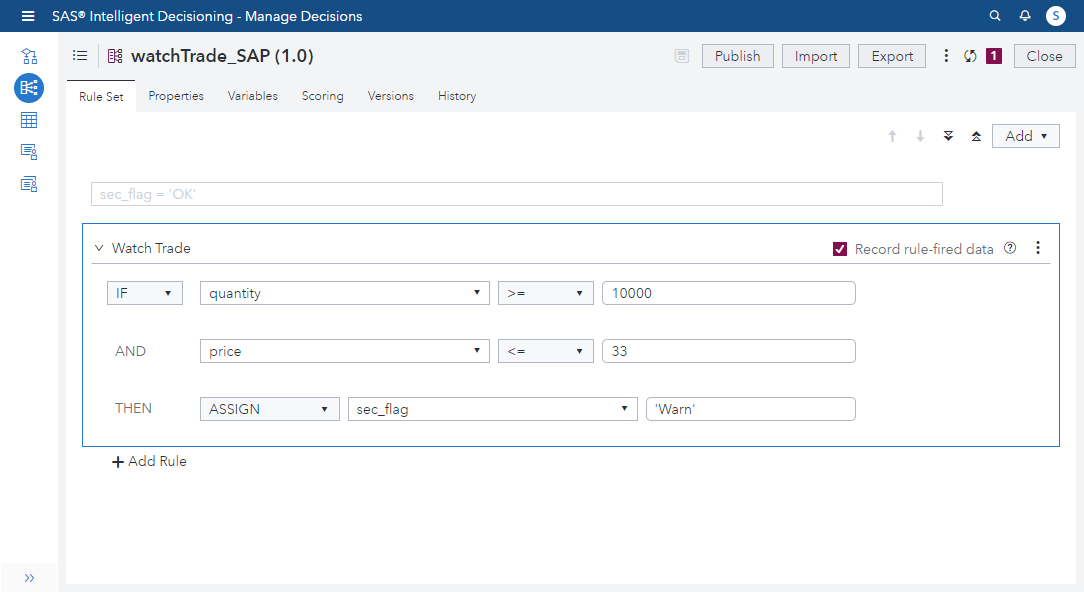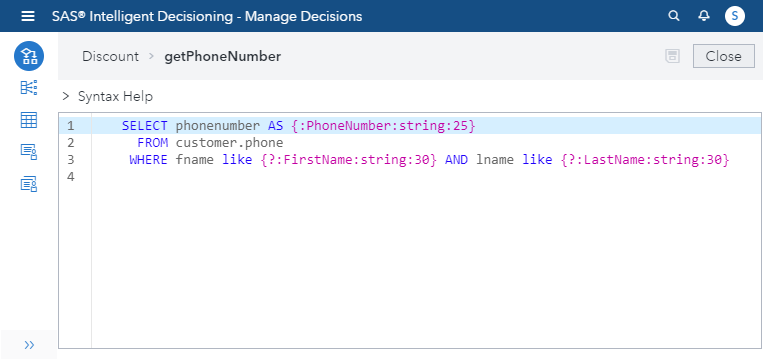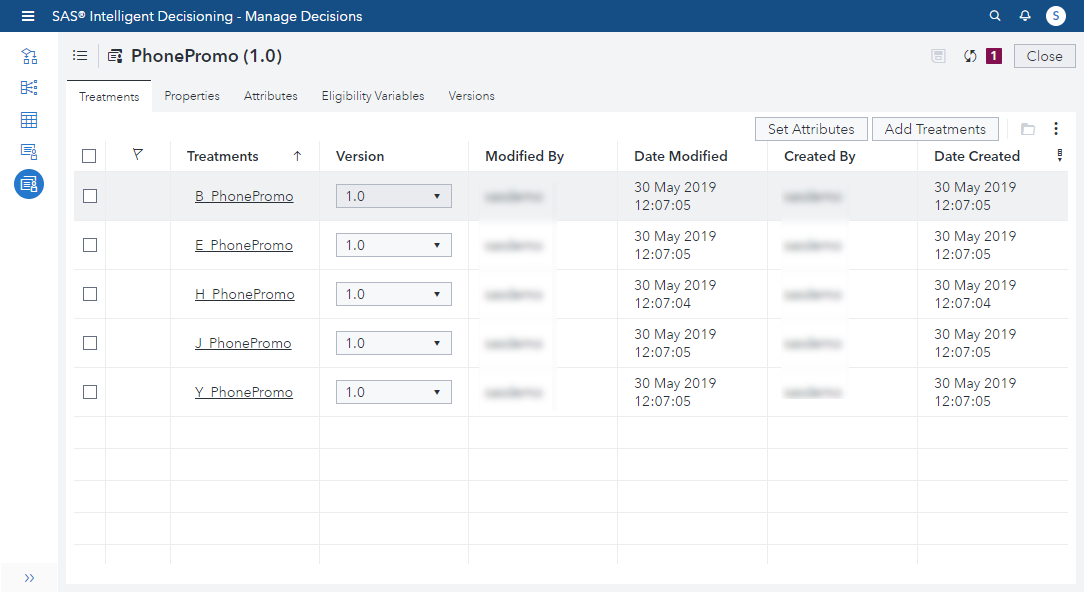Raw data doesn’t change an organization, and neither do analytics on their own. It’s making decisions based on that data and the results of analytics that drives change through a company. Every decision is important and influences an organization. Thousands of decisions need to be made every day and many decisions are dependent on other decisions in an interconnected network.
SAS Intelligent Decisioning combines business rules management, decision processing, real-time event detection, decision governance and analytics to automate and manage decisions across the enterprise. It supports customer-facing activities such as personalized marketing and next-best action, plus decisions affecting customers, including credit services and fraud prevention.
Overview
Business rules
An integrated business rule management platform enables fast rule construction, testing, governance and integration within decision flows. You can manage rule versions for tracking and governance. The solution allows users to create complex business logic supported by sophisticated functions and integration with Lookup Tables.
Decision flows
A graphical drag-and-drop interface allows users to build decisions with minimal programming effort. Decisions are created in a decision flow that orchestrates business rules, analytical models, database access, custom code objects and more.
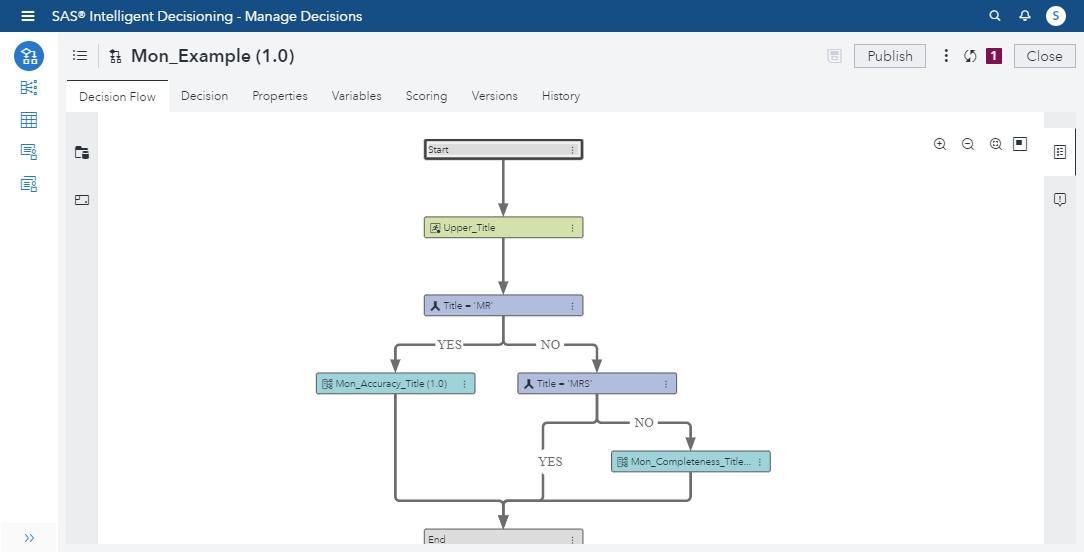
Further, it is possible to test and maintain different versions of decisions and business rules before deploying them for production real-time or batch execution.
The high-performance, real-time Micro Analytics Services (MAS) engine can handle more than 5,000 real-time transactions per second with response times of 10 milliseconds per transaction. The REST interface to call decisions or business rules in real-time provides simple integration with most third-party applications.
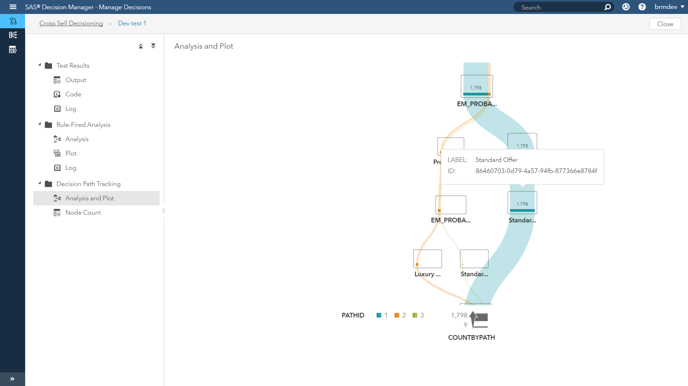
New Features
Recently, the latest release of SAS intelligent Decisioning was released and I’d like to highlight some of the new features.
SQL Query Node
Users can now submit SQL directly into a SQL Query node without supplying any additional coding logic. The SQL Query node supports SELECT, INSERT, DELETE and UPDATE.
To link a SQL statement to a decision, just point tables and columns to the decision variables as shown below in the curly brackets. Intelligent Decisioning will then automatically pass data into the SQL as appropriate.
If you query data via a select statement, the result is returned in a Datagrid. A Datagrid is a data type for an object in Intelligent Decisioning and represents data in a table format that belongs to a single record.
Datagrids are used in many places in Intelligent Decisioning and there is a rich set of Datagrid functions to access and work with data in a Datagrid.
Python Code Node
Intelligent Decisioning provides an environment that aims to minimize the need to write code to build decisions. But if necessary, it is possible to submit code. Intelligent Decisioning supports writing code in Python as part of a decision flow. Data from a decision flow can be passed into the Python code and return values will be passed back from Python into the decision flow.
To enable coding in Python, a Python execution environment needs to be installed alongside Intelligent Decisioning. If a decision flow contains a Python Code Node, the Python code will automatically be executed in the Python environment as part of the overall decision.
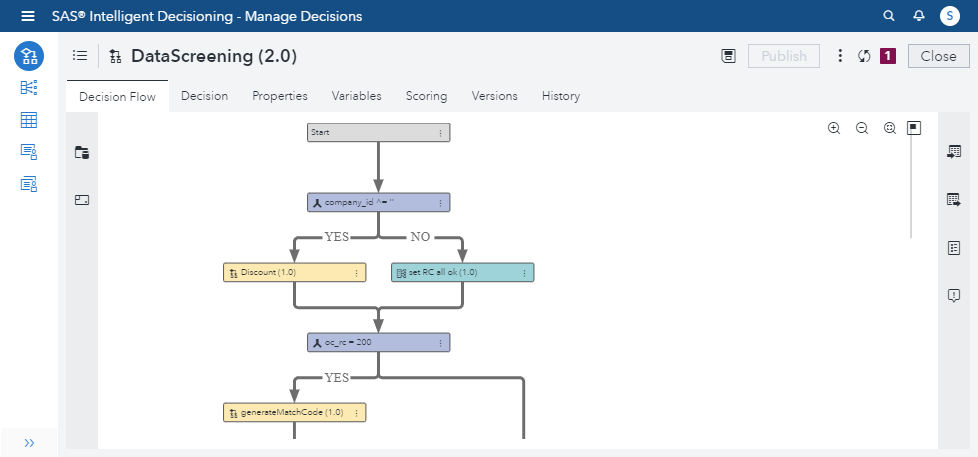
A code editor in Intelligent Decisioning allows you to edit your Python code within the environment.
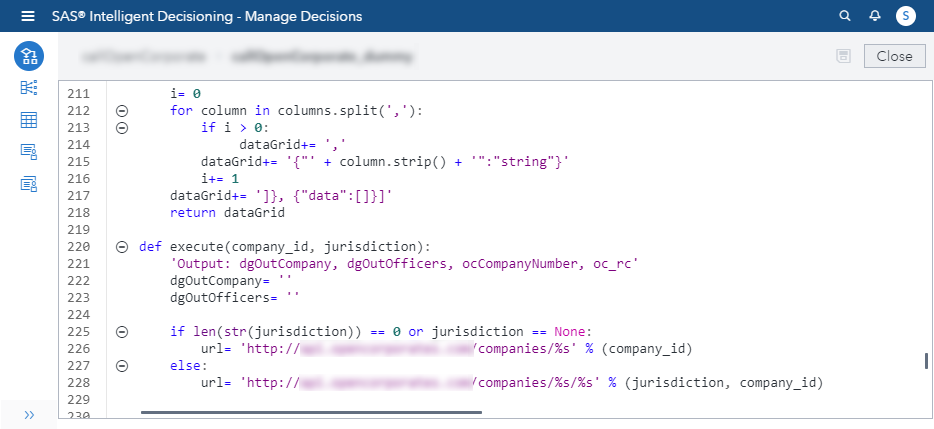
Decision Node
Decision flows can call other decision flows. This opens the way to designing and building modular decisions with “pluggable” components. You can also build reusable decisions which are called by different decision flows. Building decisions in such a modular way makes it easier to read and maintain decision flows.
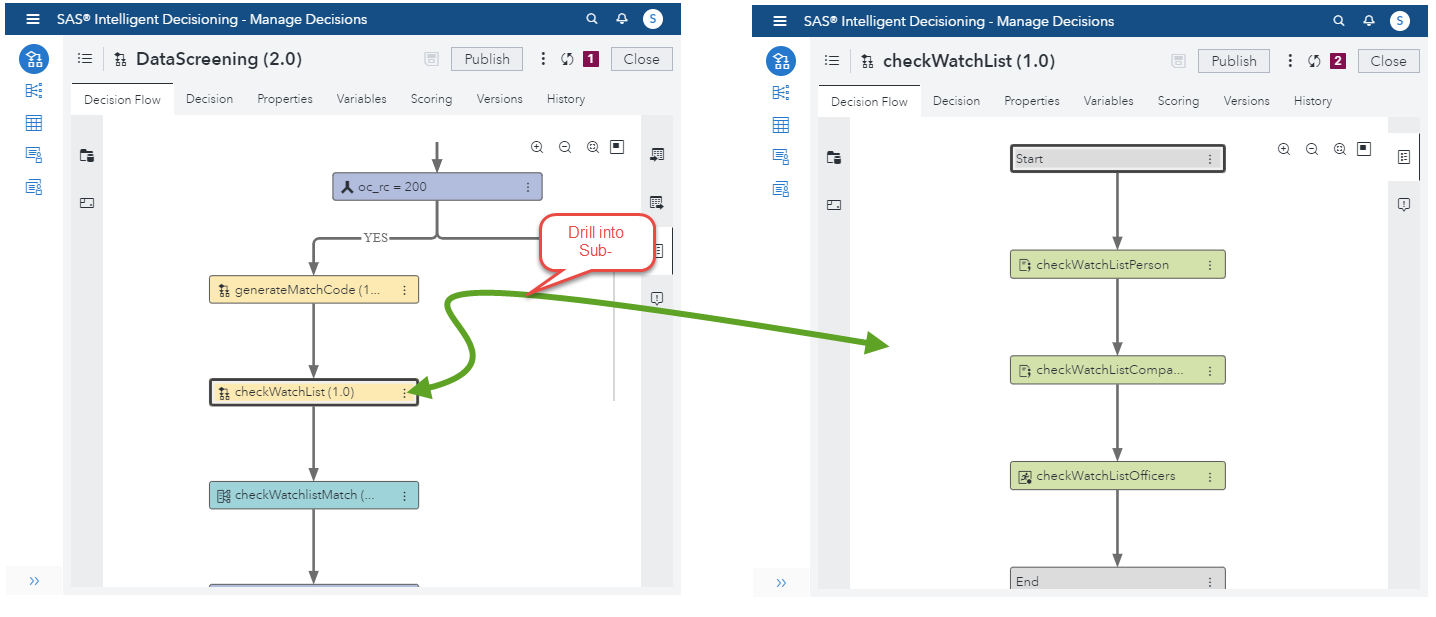
Treatments
Treatments are lists of attributes with fixed or dynamic values.
Treatments are used to define offers to present to a customer as a result of an inbound marketing campaign. Or treatments can be used as parameter lists to control engine settings. There are numerous use cases for treatments.
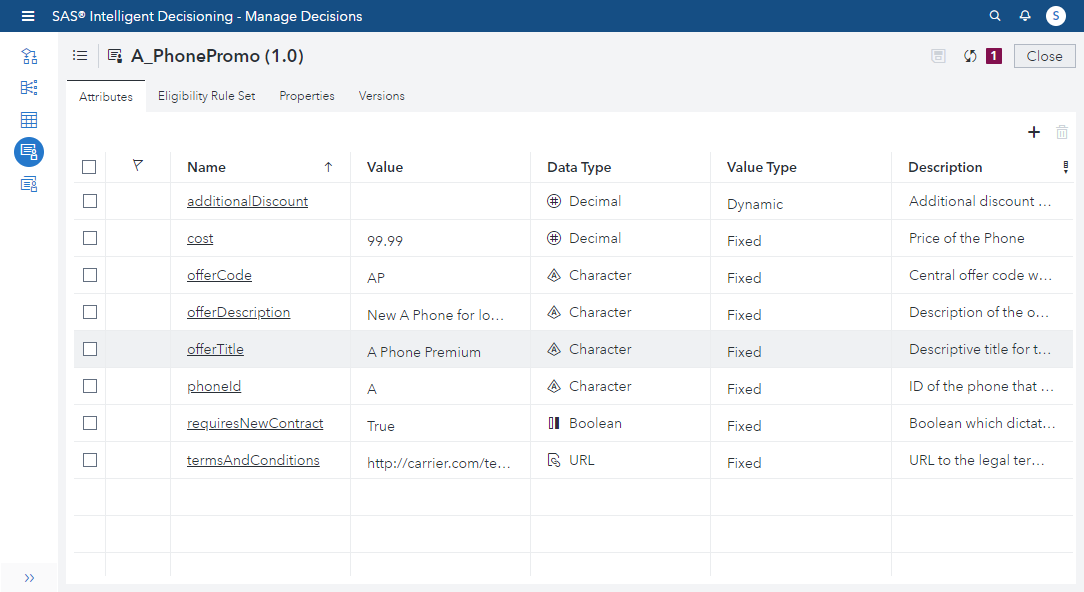
To determine if a treatment is valid for a decision, you can set Eligibility Rules to decide when a treatment will be used. For audit reasons and to track changes over time, you can also have different versions of a treatment.
To utilize treatments, you group them together in treatment groups, which can then be called from a decision flow.
Conclusion
Manging and analysing high volumes of data to make thousands of decisions every day in an automated fashion and applying analytics to real-time customer interactions require a sophisticated and complete solution like SAS Intelligent Decisioning. It enables users to create, test, control versioning and trace analytically driven decisions all in one solution.
By making decisions, smarter organizations become more efficient. As mentioned in the beginning: Data doesn’t change your organization, decisions do!
